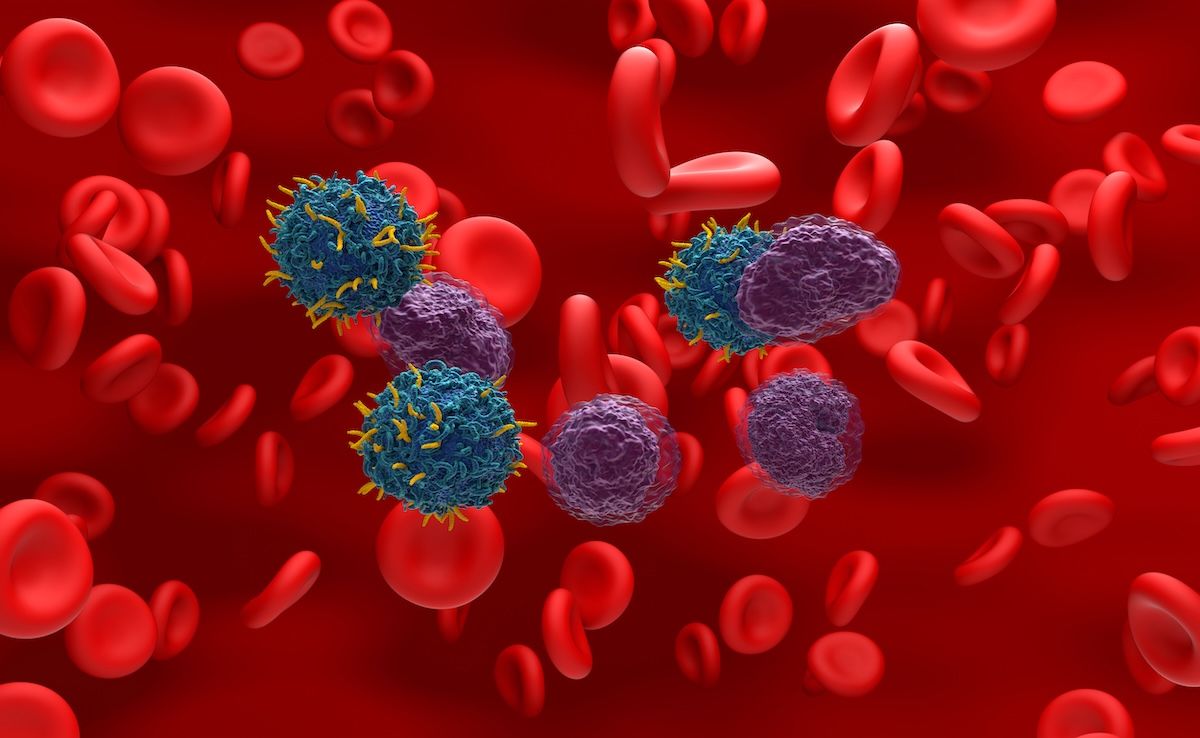Video
ASH 2020 Data: DKd Versus DVd Implications
A discussion on the practical implication of the data from the ASH (American Society of Hematology) 2020 Annual Meeting regarding DKd versus DVd.
C. Ola Landgren, MD, PhD: Let’s move into the ASH [American Society of Hematology] meeting data again. There was one presentation with first author Katja Weisel, [MD,]from Germany. Ajai, she talked about the DVd [daratumumab, bortezomib, dexamethasone] regimen versus DKd [daratumumab, carfilzomib, dexamethasone]. What’s the implication of those findings?
Ajai Chari, MD: It’s an interesting study in the sense that they basically tried to compare the head-to-head PI [proteasome inhibitor] DEX [dexamethasone] with a triplet therapy. They eliminated DKd [daratumumab, carfilzomib, dexamethasone]; to its credit it did include PI-refractory patients, when you take that out, because those patients would never have been accrued to CASTOR because the control arm was Bd [bortezomib, dexamethasone].
So it was really DKd [daratumumab, carfilzomib, dexamethasone] in PI-sensitive, or naïve patients, to DVd [daratumumab, bortezomib, dexamethasone]; what they showed was the 12-month PFS [progression-free survival] was essentially 73.1% for the DKd [daratumumab, carfilzomib, dexamethasone] and 59.9% for DVd [daratumumab, bortezomib, dexamethasone]. That translates into a hazard ratio of 0.61, which is consistently being maintained, and in the prior PI-exposed patients, it was even lower at 0.46.
What it tells us is it’s a head-to-head study. Now the only criticism of course is, and I think this is what led to one of the fatal flaws of the initial first generation of studies, everybody touted that POLLUX versus CASTOR is proof that a better partner for a CD38 is an IMiD [immunomodulatory drug].
But the study designs are totally separate; the patient populations are different. DVd [daratumumab, bortezomib, dexamethasone] was fixed-duration treatment. When you look at the PFS curve, the control arm plummets after you stop Vd [bortezomib, dexamethasone]. Is that rocket science? Is anybody surprised?
We also say that it’s hard to give Vd [bortezomib, dexamethasone] to progression. We’ve all been saying the safety issue. This just tells us what we knew that the Kd backbone [carfilzomib, dexamethasone] is deliverable to progression, you can add CD38, and you can get better efficacy. I think that was the main point of the study, but there are still significant issues with comparing to the control arm where the control arm was discontinued.
C. Ola Landgren, MD, PhD: How would you educate other providers on how to best identify patients who could maybe use the DVd [daratumumab, bortezomib, dexamethasone] or the DKd [daratumumab, carfilzomib, dexamethasone]; or do you only do DKd [daratumumab, carfilzomib, dexamethasone] across the board?
Ajai Chari, MD: The only person for whom I might use DVd [daratumumab, bortezomib, dexamethasone] would be an older patient with cardiac comorbidities, or DPd [daratumumab, pomalidomide, dexamethasone]. That may be another place where you do use [pomalidomide] in a patient who has a significant cardiac history and uncontrolled blood pressure. Other than that, I don’t know. The data are so compelling with CANDOR and IKEMA; I don’t know why one wouldn’t try the K [carfilzomib] backbone.
C. Ola Landgren, MD, PhD: I think this session we had today was very fun, and I think it’s fun to see how we are going after the disease a little bit more aggressively in slightly different manners. I hear, Ajai, MD], you go quite aggressively after the first relapse. If I were to put Luciano, Rafael and me on a scale, a little bit more aggressive in the front line, but together we are probably the same if we blend it together there. This is just speculation.
Ajai Chari, MD: To that point I will add, there have been very fulminant drops with DVRd [daratumumab, bortezomib, lenalidomide, and dexamethasone], and they don’t get clots. From a pathophysiology perspective, we can’t minimize that carfilzomib; the reason you get hypertension is you get increased vascular tone that’s throughout the circulation; systemic and pulmonary.
There is this thrombotic issue from the LEN [lenalidomide]. Then as well as the other factors I mentioned; performance status, renal failure, paraprotein burden; those are the factors that are important, and you don’t see as much thrombotic issue. I completely agree with Rafael, who was saying earlier; one of the criticisms I have with the ENDURANCE study, is it’s not fair to take peripheral neuropathy, which is a single organ system, and compare it to a composite end point ofcardio/pulmonary/renal, and say, “OK, well there, carfilzomib.”
Luciano Costa, MD, PhD: It was custom made to fail; that end point was custom made to fail carfilzomib.





